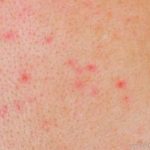Antibodies are Y-shaped specialized proteins used by the immune system to identify and remove antigens and other foreign bodies such as viruses. They are also known as immunoglobulins and they move through the bloodstream to assist the body in defending itself against harmful antigens. Antigens include all those substances that evoke an immune response such as bacteria, viruses, and incompatible blood cell types. Other antigens include allergens such as dust, pollen and bee stings. The immune system, however, does not attack a sub class of antigens called autoantigens unless with autoimmune disorders such as lupus.
The human body has thousands of antibodies which take on different forms when an immune response is triggered. The antibodies are able to recognize specific antigens by identifying particular regions on their surfaces called antigen determinants. After recognizing the antigen determinant, the antibody binds to it enabling other immune cells to destroy it. They are, therefore, part of the body’s acquired immune responses and subsequent responses are more effective than those triggered by the first exposure with the antigen.
Antibodies Production Process
The B cell is a type of white blood cell that develops from the stem cells in the bone marrow. It is the production site for antibodies that is activated in the presence of a particular antigen. When activated, the B cells develop into plasma cells that generate the antibodies. The antibodies then join the humoral immune system circulating in bodily fluids and blood serum in order to identify and bind those particular antigens.
During the first exposure to an antigen, the plasma cells can take up to two weeks before generating enough antibodies to counteract it. The antibody production reduces when the infection is controlled while a small sample of the produced antibodies remains in circulation. The subsequent responses are, therefore, faster and more forceful compared to that first response. This is because when the B cells circulating in the blood stream encounter the antigen, memory cells will be produced instead of relying on getting stimulated to form mature plasma cells that in turn produce the antibodies.
Antibodies are produced to bind to the specific antigen and their Y structure supports this function. It consists of a variable part where the antigen is attached and a constant part used to determine its class. Although the antibody is able to switch its constant part and become a different class, its variable part does not change. This ensures that it is able to recognize the specific antigen it was formed to attach to.
Classes of antibodies
- IgM: It is produced when an antigen is encountered for the first time and forms the primary immune response to an encounter with an antigen. It is found in the bloodstream and not in tissues.
- IgG: It is the most prevalent class of antigen that is produced when a particular antigen is encountered again. It forms the secondary response and is characterized by more antibody production, faster and effective antigen identification.
- IgA: They are produced to defend against antigen intrusion on surfaces with mucous membranes such as the eyes, nose and the digestive tract. These antibodies are present in the bloodstream, secretions produced by mucous membranes and the colostrum.
- IgE: They are produced in the presence of allergen triggering allergic responses. These antibodies are present in the bloodstream and the mucous membrane of the digestive tract.
- IgD: Although the function of these antibodies is unknown, they are found on the surface of immature B cells. Small amounts are also found in the bloodstream.
